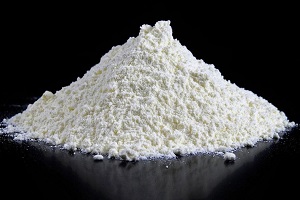- Unit 13,Floor 5h, No 179, Orchid Building, East-Ferdows, Tehran, IRAN
- info@Armaantejarat.com
- 0098912021800

Calcium-rich foods for vegetarians

Calcium-rich foods for vegetarians
Calcium-Rich Foods Vegetarians have plenty of calcium-rich foods, and many of them don't contain dairy. This may be good news, especially for vegetarians and people who are lactose intolerant and can't fully digest dairy products. Consuming calcium carbonate powder is essential for overall health. According to the National Institutes of Health (NIH) in the United States, most adults between the ages of 19 and 50 need 1,000 milligrams of calcium per day. This amount of calcium is found in about three 8-ounce glasses of milk. Milk, cheese, and yogurt are the best sources of calcium, but many non-dairy foods are also rich in this mineral. In this article, we describe 18 plant-based sources of calcium. Calcium-rich foods for vegetarians and people who don't consume dairy. The following foods are rich in calcium and do not contain any animal products. Chia Seeds One ounce or 2 tablespoons of chia seeds provides 179 milligrams of a reliable source of calcium. Chia also contains boron, which promotes bone and muscle health by helping the body metabolize calcium, a reliable source of phosphorus, and magnesium. Add chia seeds to smoothies or mix them into oatmeal or yogurt for a little crunch. Soy Milk One cup of fortified soy milk has about the same amount of calcium as cow's milk. It's important to choose a product that is fortified with calcium carbonate. Soy milk is also high in vitamin D and contains less saturated fat than whole milk with lactose. Almonds Just 1 cup of whole almonds contains 385 milligrams of a safe source of calcium, more than a third of the recommended daily value. However, that same serving also contains 838 calories and almost 72 grams of fat. While fats are mostly healthy and unsaturated, they are high in calories, and a person should limit their intake to portions smaller than a quarter cup per serving. Dried Figs About eight figs, or 1 cup, provide 241 milligrams of a safe source of calcium. Figs make a great sweet treat and are high in fiber and antioxidants. Try this treat as an afternoon snack or crumble it into a creamy jam. Brand-Name Tofu Tofu tends to be an excellent source of calcium. However, calcium content varies depending on the firmness and brand, and can range from 275–861 milligrams per half cup. To get the calcium benefits, read the label carefully and only choose tofu that contains calcium salt, which manufacturers use as a coagulant. White Beans A cup of white beans contains 161 milligrams of calcium. White beans are a low-fat food and are also rich in iron. Add them to your favorite soup or salad, eat them on their own, or use them in hummus. Sunflower Seeds A cup of sunflower seed kernels contains 109 milligrams of calcium. These seeds are also rich in magnesium, which balances the effects of calcium in the body and regulates nerve and muscle health. Additionally, sunflower seed kernels contain vitamin E and copper. Together, these nutrients can promote bone strength and flexibility and prevent bone loss. However, sunflower seeds can contain high amounts of added salt, which depletes your body's calcium levels. For optimal health benefits, choose raw seeds and salt. Also, consider a serving size of about a handful of kernels to avoid overeating. Bitter Broccoli Bitter broccoli, also known as bitter broccoli, contains 100 milligrams of calcium per cup. Many recipes aim to tone down and complement the intense flavor of this hearty vegetable. Edamame A cup of frozen, canned edamame contains 98 milligrams of calcium. Available fresh or frozen and shelled or podded, edamame is high in high-quality protein and all nine essential amino acids. Kale Just 2 cups of raw, chopped kale provides about 180 milligrams of calcium. Kale is part of the cruciferous vegetable family, which also includes broccoli. The leafy greens are a reliable source of antioxidants that can prevent or delay cell damage. Kale is also low in calories, with just 35 calories per 100 grams. Add chopped kale to salads or sauté or steam the vegetables in a crock pot. Sesame Seeds Eating just 1 tablespoon of sesame seeds adds 88 milligrams of a safe source of calcium to a person’s diet. Try toasting them and sprinkling the seeds on a salad or baking them into bread for a more nutritious flavor. Sesame seeds also contain zinc and copper, both of which are good for bone health. A 2013 studyTrusted Source suggests that sesame seed supplements may help relieve some symptoms of knee osteoarthritis. Broccoli A cup of frozen broccoli has 87 milligrams of a safe source of calcium. According to the National Cancer Institute in the United States, a diet rich in broccoli and other members of the cruciferous family may be a safe source of calcium, with reduced risk of cancer. Research in rodents suggests that compounds in broccoli may help prevent bladder, breast, colon, liver, and stomach cancers. However, studies in humans have had inconclusive results. Sweet Potato A large sweet potato contains 68 milligrams of a safe source of calcium. These vegetables are also rich in potassium and vitamins A and C. Vitamin A is an important antioxidant that may help Improve vision, resist the effects of aging, and prevent cancer. Sweet potatoes are naturally low in fat and calories. They are popular as a side dish in some parts of the world. Mustard Greens Raw collard greens contain 84 milligrams of RDI calcium per cup, and they are packed with other vitamins and minerals. Raw mustard greens are also a significant source of nutrients, containing 64 milligrams of RDI calcium per cup. Okra A cup of raw okra contains 82 milligrams of RDI calcium. Okra is also a significant and reliable source of protein, fiber, iron, and zinc. Many people enjoy the vegetable boiled, stir-fried, pickled, or roasted. Oranges and Orange Juice A large orange contains 74 milligrams of RDI calcium, while a glass of calcium-fortified orange juice contains 300 milligrams of calcium. Pumpkin Pumpkin contains 84 milligrams of calcium per cup. The same serving also provides 31 milligrams of vitamin C, which is more than a third of the recommended daily intake. It is recommended that men consume 90 milligrams and women consume 75 milligrams of the vitamin per day. Korean pumpkin is also rich in vitamin A, and there are many different recipes for this. Arugula Another cruciferous vegetable, arugula, contains 32 milligrams of calcium per cup. This may not seem like a huge amount, but arugula is high in water and low in calories, with 5 calories per cup. A person can eat 3 or 4 cups per serving and increase their total calcium intake. Arugula also contains high amounts of a compound called erucin, which may fight cancer.
Similar Blog


What is the difference between calcium carbonate and sodium carbonate?
What is the difference between calcium carbonate and sodium carbonate?
Calcium carbonate is a mineral and sodium carbonate is a chemical sub...
Side effects of taking calcium carbonate oral tablets
What are some side effects that I should call my doctor about right away? Warning or precaution: Even though it is rare, some people may have very bad...
Calcium-rich foods for vegetarians
Calcium-Rich Foods Vegetarians have plenty of calcium-rich foods, and many of them don't contain dairy. This may be good news, especially for vegetar...


